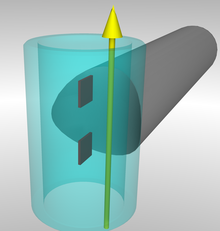
Back আন্তঃবহিস্ত্বকীয় পানি হারানো Bengali/Bangla Transepidermaler Wasserverlust German Pérdida de agua transepidérmica Spanish Perdita di acqua transepidermica Italian
This article needs additional citations for verification. (October 2011) |

Transepidermal water loss (TEWL or TWL) is the loss of water that passes from inside a body (animal or plant) through the epidermis (that is, either the epidermal layer of animal skin or the epidermal layer of plants) to the surrounding atmosphere via diffusion and evaporation processes. TEWL in mammals is also known as insensible water loss (IWL), as it is a process over which organisms have little physiologic control and of which they are usually mostly unaware. Insensible loss of body water can threaten fluid balance; in humans, substantial dehydration sometimes occurs before a person realizes what is happening.
Measurements of TEWL[1] may be useful for identifying skin damage caused by certain chemicals, physical insult (such as "tape stripping") or pathological conditions such as eczema, as rates of TEWL increase in proportion to the level of damage. However, TEWL is also affected by environmental factors such as humidity, temperature, the time of year (season variation) and the moisture content of the skin (hydration level). Therefore, care must be taken when interpreting the meaning of TEWL rates.
- ^ Fluhr, Joachim; Berardesca, Enzo; Elsner, Peter; Maibach, Howard I. (2004). Bioengineering of the skin: water and stratum corneum (2 ed.). CRC Press. ISBN 0-8493-1443-7.